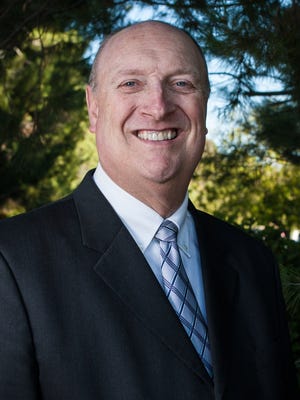[ad_1]
“We take these truths for granted, that all men (and women) are created equal, that their creator is endowed with certain inalienable rights, including life, liberty and the pursuit of happiness.
These inspired words found in the Declaration of Independence have been part of the American Dream since the beginning of our great nation.
As the war in Afghanistan ends and we see a new wave of immigrants seeking asylum, we must promote a fundamental respect for the human dignity of every human soul, regardless of culture, color or religion.
We need to work to build bridges of understanding with others who are different from us rather than creating walls of isolation. Knowing that we are all children of God can help us gain a better understanding of the worth of others and the ability to overcome prejudices.
Jesus was once asked, “Master, what is the great commandment of the law?
Jesus said to her, “You shall love the Lord your God with all your heart, with all your soul, and with all your mind. This is the first and the great commandment. And the second is like it: You shall love your neighbor as yourself. On these two commandments hang all the law and the prophets â€, Matthew 22:37, 39.
Two of our highest values ​​in life are loving God and loving our neighbors. This includes neighbors not only in our own family, but neighbors in our community, in our nation and in the world. The Savior’s teaching on loving others is based on the principle that we are all children of God.
The United States was founded by immigrants of many different nationalities, cultures, religions, and ethnicities. The American Dream was unique in that instead of trying to unify people under a specific religion or culture, our founding fathers instead sought to unify people of diverse backgrounds through a new constitution where all would be equal before the law.
Following:Interfaith: Bahá’Ãs around the world commemorate 100 years of the death of Abdu’l-Baha
While our Constitution needed improvements, such as suffrage for women and the abolition of slavery, it still helped move our nation forward in an attempt to unite all Americans into one people. .
We can do a better job of eliminating prejudice against others, including African Americans, Latinos, Asians, and other ethnic and cultural groups. Reverend Theresa A. Dear of the NAACP reminded us that “racism thrives on hatred, oppression, collusion, passivity, indifference and silence.”
Befriending others does not require that we give up our own culture and our own values. However, no matter where we live, what we look like or how we choose to live, we are all children of God with the will and ability to rise above prejudice and racism. In the parable of the Good Samaritan, Jesus taught that the command to love one’s neighbor transcends ethnic, cultural, and religious differences “, Luke 10: 25-37.
The Prophet Joseph Smith explained that a person “filled with the love of God, not only blesses his (or his) family, but travels around the world, anxious to bless the whole human race.”
Following:Interfaith: Are we missing vital messages because of our narrow-mindedness?
The song “Getting to Know You” from “The King and I” gives us a simple method to develop the power to love others. When we try to understand and relate to other people other than us, we should just try to get to know them. Time and time again, hostility gives way to understanding and respect.
American poet Edwin Markham wrote: “He drew a circle that excluded me – Heretic, rebellious, something to be scoffed at; But love and I had the intelligence to win: we drew a circle and welcomed it!
As we get to know each other better, we will find that we can all coexist peacefully despite our deepest differences.
Tom Miller was a bishop in The Church of Jesus Christ of Latter-day Saints and is a member of the Conejo Valley Interfaith Association, which meets monthly and welcomes members of the clergy and representatives of all faiths. He can be contacted at [email protected].
[ad_2]

